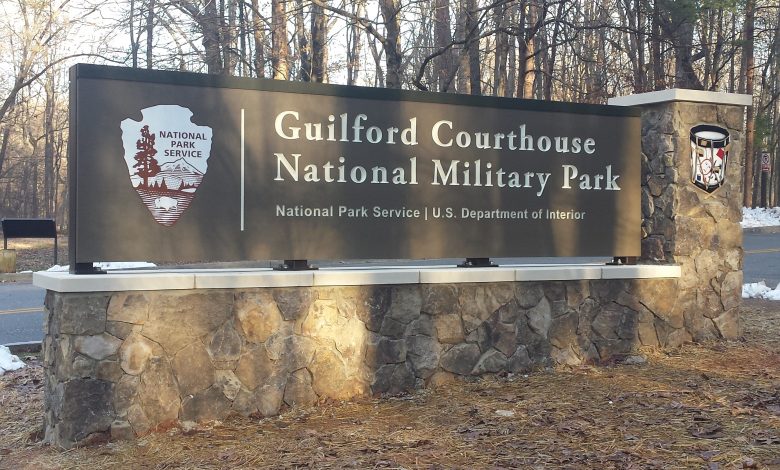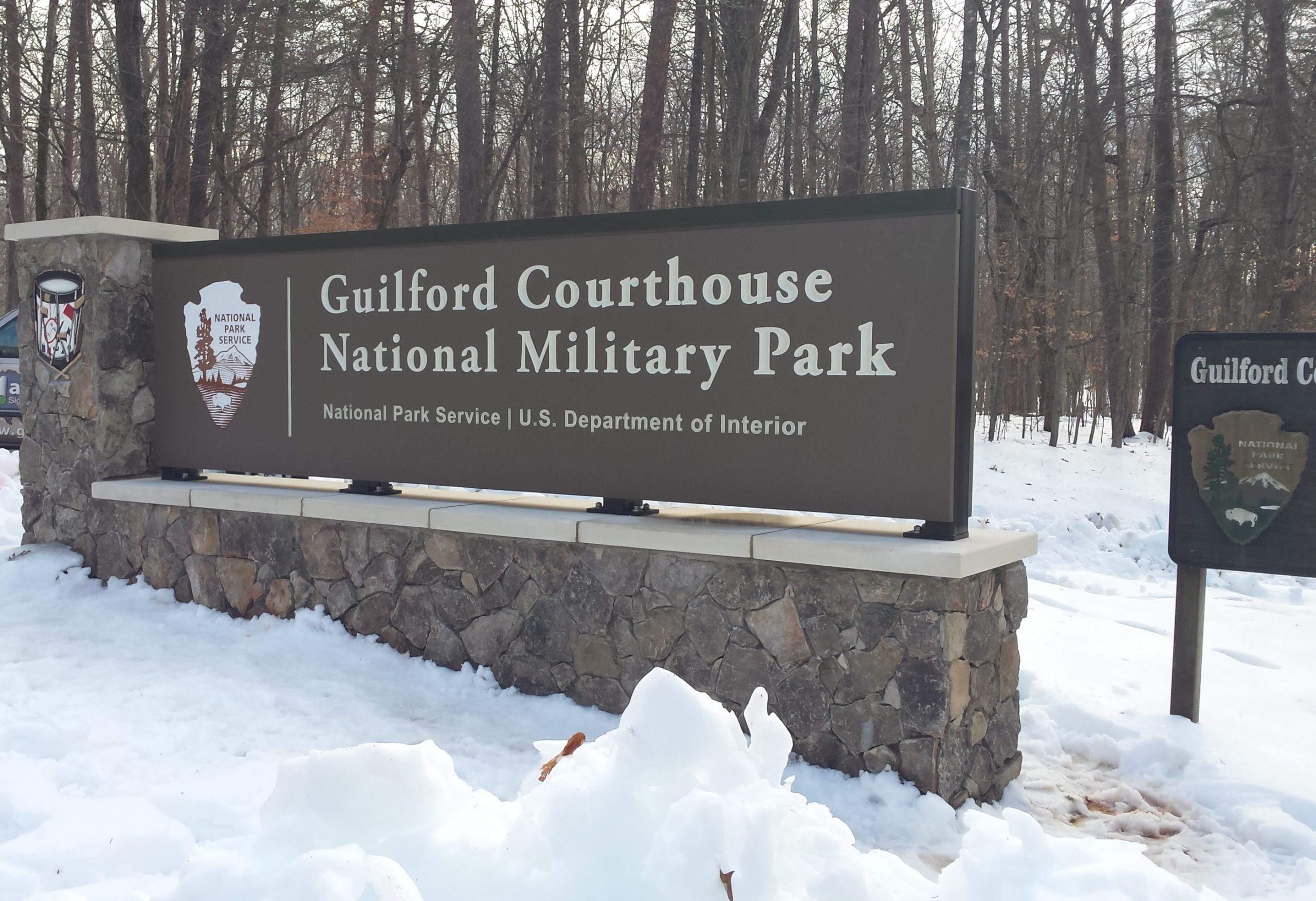Featured Project: Gate City Signs Re-Creates Historic National Park Service Sign
The owner of Gate City Signs, Jim Helms, says it was a real honor to be able to re-create the signage for this park that is so near and dear to his heart.
Greensboro, North Carolina-based Gate City Signs & Graphics, a full-service graphics, sign and vehicle wraps shop, announces a recent project it completed for the National Park Service.
The company says it had the privilege of replacing an aged and worn historic sign at the entrance of Guilford Courthouse National Military Park, which is located just outside Greensboro. In addition to replacing the old post and panel sign with a permanent monument sign, they were tasked with recreating the colorful, historical sign known affectionately as the “Sad Drum.”
“This was an amazing project to be involved with and one that’s close to my heart,” says Gate City’s owner, Jim Helms. “I’ve frequently run through the military park and trained for races there. And I purposely selected my business location to be nearby the park. So, it was an honor to design and install this sign right in our backyard.”
Helms says from production to installation, it took about six to eight weeks to complete the project. “Mother Nature gifted Gate City Signs with warm temperatures in early December, which allowed them to get the foundation poured and concrete blocks and stone laid before the big December snowfall,” Helms writes.
All paint colors, materials and fonts were either hand-selected by park officials or designated by National Parks brand guidelines. The main sign was built from durable Western Red Cedar, which should last about 15-20 years, he says. And the stone, metal color, sign colors and fonts are all in keeping with official guidelines.
Helms adds one interesting note about doing a project such as this: “The dirt excavated during the project couldn’t be disposed of just anywhere. In keeping with park rules and regulations, Gate City Signs took special care to spread the dirt at a designated site within the boundaries of the park. It’s essential to keep the soil on-site in case it were to contain any artifacts. The park doesn’t want that soil ending up anywhere else but on the property.”
He says reproducing the historic Greensboro sign called “Sad Drum” was the most significant part of the sign project. The Sad Drum was replicated with a high-density urethane (HDU) foam that hardens when painted. Once the shape of the sign was exacted from the newer and stronger material, Gate City Signs hired a professional artist to replicate the exact artwork from the original Sad Drum sign.
Obviously a bit of a history buff, Helms goes on to tell the story of the Sad Drum: “The original drum survived the Battle of Guilford Courthouse and has hung at the waist of a militia mannequin at the Guilford Courthouse National Military Park since 1954. Though not much was known about the drummer, Luther W. Clark, and there is some question whether the drum was ever used in battle, it still remains an icon of Greensboro’s Military Park.
“Over the years, there has been much speculation regarding the meaning of the sad drum. The drum itself depicts a sad face, which has been assumed to be the face of King George III as a sad Humpty Dumpty because his kingdom was falling and couldn’t be put back together. In addition to the face, the sad drum sign also displays the red and blue NC militia flag, a French flag, cannon barrels, the butt-end of a musket, swords, a spear-like pole arm called a spontoon, and other war implements.
“In 1985, park rangers Don Long and James Clark recreated the sad drum in the form of a 5-inch replica, which was sent to then National Park Service Director William Penn Mott in Washington D.C. to hang on a Christmas tree in his office. Mott wanted each of the 300 parks across the U.S. to provide a lightweight ornament that was characteristic of each park.”


